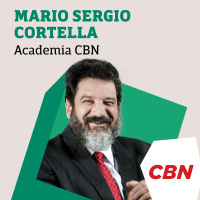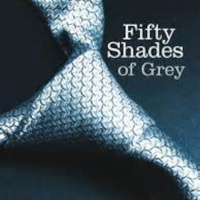Sinopsis
Neuroscientists Talk Shop is the University of Texas at San Antonio's (UTSA) Neurobiology Podcast, showcasing the current research of internationally renowned guest Neuroscientists. Each episode features a moderated discussion with a cross section of UTSA Neurobiology faculty, highlighting the featured guest's research, and the state of the art in the field at hand.
Episodios
-
Episode 133 -- Michael Long, PhD
03/09/2015 Duración: 43minThursday, September 3, 2015 Michael Long (New York Univ. School of Medicine) visits us to discuss bird song, HVC neurons, and neuronal codes for movement and movement timing. Please forgive the distortion. Charlie is still learning the equipment. Duration: 43 minutes Discussants:(in alphabetical order) Todd Troyer (Assoc Prof, UTSA) Nicole Wicha (Assoc Prof, UTSA) Charles Wilson (Ewing Halsell Chair, UTSA) acknowledgement: JM Tepper for original music.
-
Episode 132 -- Bharath Chandrasekaran, PhD redux
27/08/2015 Duración: 37minThursday, August 27, 2015 Bharath Chandrasekaran (UT Austin) visits us again to discuss prevailing ideas about differential recruitment of corticostriatal learning systems during speech sound learning. Duration: 38 minutes Discussants:(in alphabetical order) Salma Quraishi (Res Asst Prof, UTSA) Todd Troyer (Assoc Prof, UTSA) Nicole Wicha (Assoc Prof, UTSA) Charles Wilson (Ewing Halsell Chair, UTSA) acknowledgement: JM Tepper for original music.
-
Episode 131 -- Sarah Laszlo, PhD
20/08/2015 Duración: 44minThursday, August 20, 2015 Sarah Laszlo (Binghamtom University) discusses the dual route model for speech recognition, biometrics, hacking brains, and X-men. Duration: 44 minutes Discussants:(in alphabetical order) Salma Quraishi (Res Asst Prof, UTSA) Nicole Wicha (Assoc Prof, UTSA) Charles Wilson (Ewing Halsell Chair, UTSA) acknowledgement: JM Tepper for original music.
-
Episode 130 -- Hyoung-gon Lee PhD
09/04/2015 Duración: 39minThursday, April 9, 2015 Hyoung-gon Lee (Case Western Reserve University) discusses new ideas emerging from his research that pose Alzheimer's Disease as a disease of inappropriate cell-cycle control. Duration: 39 minutes Discussants:(in alphabetical order) Salma Quraishi (Res Asst Prof, UTSA) George Perry (Dean, College of Sciences, UTSA) Todd Troyer (Assoc Prof, UTSA) Charles Wilson (Ewing Halsell Chair, UTSA) acknowledgement: JM Tepper for original music.
-
Episode 128 -- Anthony Grace PhD
27/02/2015 Duración: 42minFriday, February 27, 2015 Anthony Grace (University of Pittsburgh School of Med) discusses translational studies of schizophrenia, involving the influence of stress on dopamine network function. Duration: 42 minutes Discussants:(in alphabetical order) Salma Quraishi (Res Asst Prof, UTSA) Carlos Paladini (Assoc Prof, UTSA) Matt Wanat (Asst Prof, UTSA) Charles Wilson (Ewing Halsell Chair, UTSA) acknowledgement: JM Tepper for original music.
-
Episode 127 -- Carmen Canavier PhD
05/02/2015 Duración: 47minThursday, February 5, 2015 Carmen Canavier (LSU Med Ctr) discusses modeling diverse bursting behavior in dopamine neurons, and the importance of intrinsic dynamics in understanding firing behavior of neurons. Duration: 47 minutes Discussants:(in alphabetical order) Gerard Beaudoin (Res Asst Prof, UTSA) Salma Quraishi (Res Asst Prof, UTSA) Todd Troyer (Assoc Prof, UTSA) Charles Wilson (Ewing Halsell Chair, UTSA) acknowledgement: JM Tepper for original music.
-
Episdoe 126 -- Heather Read PhD
29/01/2015 Duración: 39minThursday, January 29, 2015 Heather Read (U of Connecticut, Storrs) discusses issues in large scale modeling of cortical auditory networks. Duration: 30 minutes Discussants:(in alphabetical order) Salma Quraishi (Res Asst Prof, UTSA) Todd Troyer (Assoc Prof, UTSA) Charles Wilson (Ewing Halsell Chair, UTSA) acknowledgement: JM Tepper for original music.
-
Episode 125 -- Stephanie Borgland, PhD
15/01/2015 Duración: 39minThursday, January 15, 2015 Stephanie Borgland (University of Calgary) discusses peptide regulation of dopamine signals related to motivation in non-homeostatic feeding. Duration: 30 minutes Discussants:(in alphabetical order) Gerard Beaudoin (Res Asst Prof, UTSA) Salma Quraishi (Res Asst Prof, UTSA) Carlos Paladini (Assoc Prof, UTSA) Matt Wanat (Asst Prof, UTSA) Charles Wilson (Ewing Halsell Chair, UTSA) acknowledgement: JM Tepper for original music.
-
Episode 124 -- Joe Cheer PhD
20/11/2014 Duración: 38minThursday, November 20, 2014 Joe Cheer (University of MD School of Med) discusses how endogenous cannabinoids might provide a possible braking mechanism for naturally occurring dopamine responses during motivated behaviors, and how this could be relevant to addiction relapse. Duration: 42 minutes Discussants:(in alphabetical order) Salma Quraishi (Res Asst Prof, UTSA) Carlos Paladini (Assoc Prof, UTSA) Denard Simmons (PhD student, Paladini) Matt Wanat (Asst Prof, UTSA) Charles Wilson (Ewing Halsell Chair, UTSA) acknowledgement: JM Tepper for original music.
-
Episode 123 -- Thomas Hnasko, PhD
06/11/2014 Duración: 30minThursday, November 6, 2014 Thomas Hnasko (UCSD) discusses using modern molecular genetic tools in mouse models to understand the neural circuitry involved in motivated behaviors. Duration: 30 minutes Discussants:(in alphabetical order) Gerard Beaudoin (Res Asst Prof, UTSA) Carlos Paladini (Assoc Prof, UTSA) Matt Wanat (Asst Prof, UTSA) acknowledgement: JM Tepper for original music.
-
Episode 122 -- John Huguenard, PhD
30/10/2014 Duración: 36minThursday, October 30, 2014 John Huguenard (Stanford) discusses his work on deciphering the neuronal mechanisms that underlie synchronous oscillatory activity in the thalamus, cortex and thalamocortical system, with specific emphasis on understanding the role of microcircuits in epilepsy. Duration: 35 minutes Discussants:(in alphabetical order) Todd Troyer (Assoc Prof, UTSA) Salma Quraishi (Asst Prof, UTSA) Charles Wilson (Ewing Halsell Chair, UTSA) acknowledgement: JM Tepper for original music.
-
Episode 121 -- Michael Drew PhD
23/10/2014 Duración: 35minThursday, October 23, 2014 Michael Drew (UT Austin) discusses how his lab probes the bidirectional relationship between behavior and adult neurogenesis in the dentate gyrus. Duration: 35 minutes Discussants:(in alphabetical order) Doug Grow (Graduate Student) Todd Troyer (Assoc Prof, UTSA) Salma Quraishi (Asst Prof, UTSA) Charles Wilson (Ewing Halsell Chair, UTSA) acknowledgement: JM Tepper for original music.
-
Episode 120 -- Michela Marinelli PhD
16/10/2014 Duración: 41minThursday, October 16, 2014 Micky Marinelli (UT Austin) discusses some of the heterogeneities in the dopamine system between adolescents and adults that may prevent associations between cause and punishment. Duration: 42 minutes Discussants:(in alphabetical order) Gerard Beaudoin (Research Prof, UTSA) Carlos Paladini (Assoc Prof, UTSA) Salma Quraishi (Asst Prof, UTSA) Matt Wanat (Asst Prof, UTSA) Charles Wilson (Prof, UTSA) acknowledgement: JM Tepper for original music.
-
Episode 119 -- Seema Agarwala PhD
09/10/2014 Duración: 42minThursday, October 9, 2014 Seema Agarwala (UT Austin) discusses the biomechanics of neural tube formation and closure in early embryogenesis. Duration: 42 minutes Discussants:(in alphabetical order) Gary Gaufo (Assoc Prof, UTSA) Salma Quraishi (Res Asst Prof, UTSA) Charles Wilson (Ewing Halsell Chair, UTSA) acknowledgement: JM Tepper for original music.
-
Episode 118 -- Sam Sober PhD
02/10/2014 Duración: 45minThursday, October 2, 2014 Sam Sober (Emory/Ga Tech) discusses how the brain solves the problem of which errors to use to drive behavior and learning in the vocal learning system of songbirds. He also discusses the importance of understanding the biomechanics of the bird vocal organ as a way to understand the mapping between neurons and the motor control involved in singing. Duration: 45 minutes Discussants:(in alphabetical order) Salma Quraishi (Asst Prof, UTSA) Fidel Santamaria (Assoc Prof, UTSA) Todd Troyer (Assoc Prof, UTSA) Charles Wilson (Prof, UTSA) acknowledgement: JM Tepper for original music.
-
Episode 117 -- Arturo Andrade PhD
04/09/2014 Duración: 34minThursday, September 4, 2014 Arturo Andrade (Lipscombe Lab, Brown University) discusses voltage sensitive calcium channels in pain and anxiety. He introduces the constellation of CaVs, their diversity, and methods he is using to tie individual channel dynamics to behavior. Duration: 35 minutes Discussants:(in alphabetical order) Salma Quraishi (Asst Prof, UTSA) Fidel Santamaria (Assoc Prof, UTSA) Todd Troyer (Assoc Prof, UTSA) Charles Wilson (Prof, UTSA) acknowledgement: JM Tepper for original music.
-
Episode 116 -- Larry Zweifel PhD
10/04/2014 Duración: 35minThursday, April 10, 2014 Larry Zweifel (UW Seattle) discusses understanding the dopamine circuit and its behavioral consequences through genetic manipulations. Duration: 35 minutes Discussants:(in alphabetical order) Gerard Beaudoin (Asst Prof UTSA) Carlos Paladini (Assoc Prof UTSA) Salma Quraishi (Asst Prof, UTSA) Todd Troyer (Assoc Prof, UTSA) Charles Wilson (Prof, UTSA) acknowledgement: JM Tepper for original music.
-
Episode 115 -- Todd Roberts PhD
27/03/2014 Duración: 32minThursday, March 27, 2014 Todd Roberts (UT Southwestern) discusses using optogenetics to probe how representation of the tutor song is encoded in songbird HVC. Duration: 32 minutes Discussants:(in alphabetical order) Salma Quraishi (Asst Prof, UTSA) Todd Troyer (Assoc Prof, UTSA) Anand Kulkarni (PhD student, UTSA) acknowledgement: JM Tepper for original music.
-
Episode 114 -- Massimo Scanziani PhD
20/03/2014 Duración: 39minThursday, March 20, 2014 Massimo Scanziani (HHMI UCSD) discusses how cortical circuitry in primary visual cortex serves as an amplifier of preprocessed signals from thalamus, rather than building new representations. He also theorizes about ways in which interneuron diversity may be catalogued and understood in the near future. Duration: 39 minutes Discussants:(in alphabetical order) Alfonso Apicella (Asst Prof, UTSA) Salma Quraishi (Asst Prof, UTSA) Todd Troyer (Assoc Prof, UTSA) Charles Wilson (Professor, UTSA) acknowledgement: JM Tepper for original music.
-
Episode 113 -- Patricio O'Donnell MD PhD
27/02/2014 Duración: 35minThursday, February 27, 2014 Patricio O'Donnell discusses integration of hippocampal and prefrontal inputs to the nucleus accumbens, and talks about transitioning from a successful academic research career to doing basic science research in an industrial setting. Duration: 39 minutes Discussants:(in alphabetical order) Gerard Beaudoin (Res Asst Prof, UTSA) Carlos Paladini (Assoc Prof, UTSA) Charles Wilson (Professor, UTSA) acknowledgement: JM Tepper for original music.

































